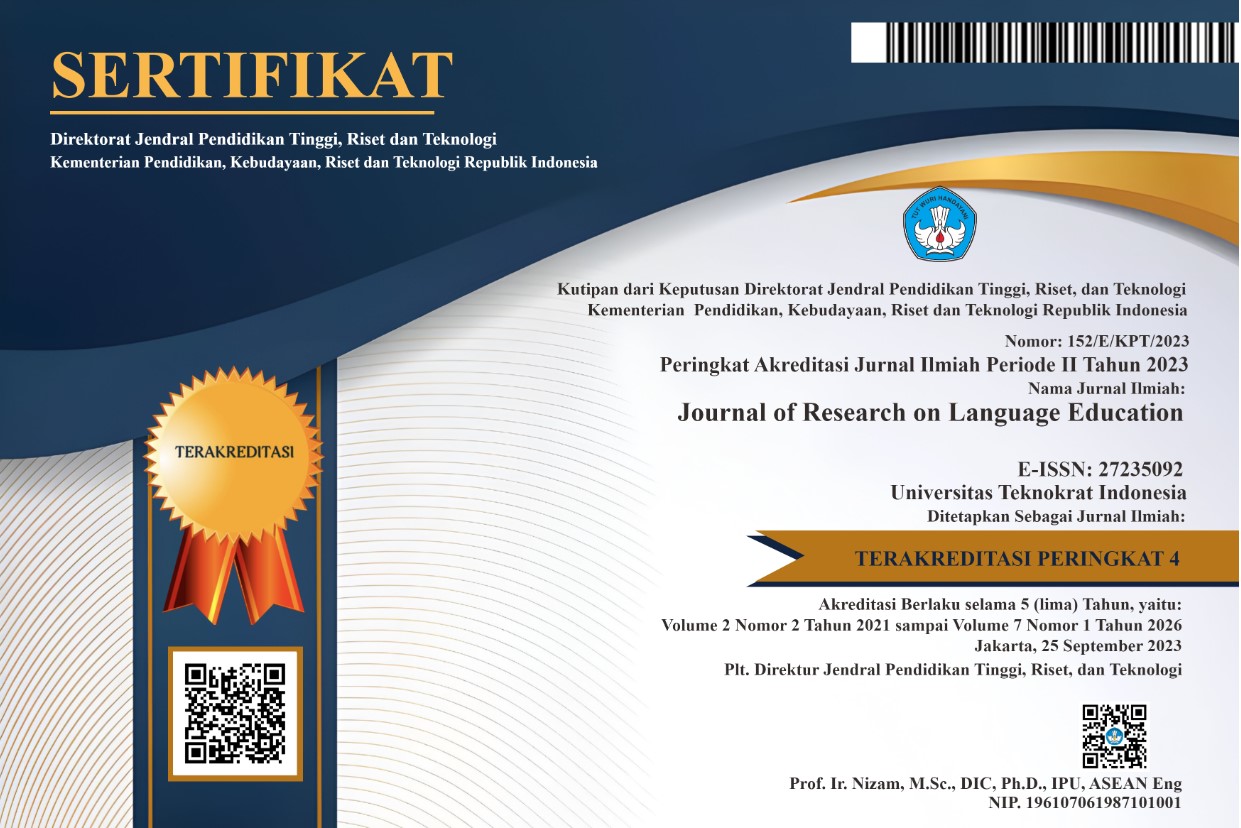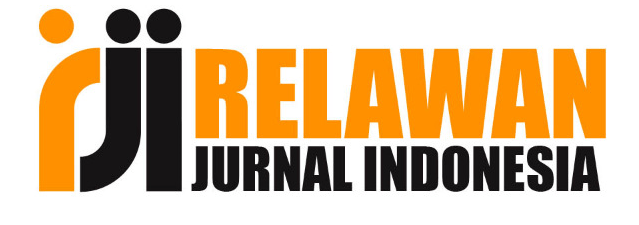FROM LIKE TO LEARNING HOW TIKTOK SPARKS EDUCATIONAL ENTHUSIASM
Abstract
This study aims to determine the effect of the TikTok application on the motivation and academic achievement level of Generation Z students in higher education. The data in this study was collected quantitatively with a survey involving 40 students from various semesters in the English study program at Tidar University. The results showed that using TikTok helped students in some ways and harmed them in others. In favourable terms, 54. Seventeen per cent agreed 'strongly' with the proposition that 'TikTok is a source to access relevant and interesting information easily', recognizing the truth of digital communication and content that appeals to Generation Z. Some respondents had a negative attitude towards TikTok. Some respondents had a negative attitude towards TikTok, stating that TikTok can make students lose focus and contribute to procrastination, which is a hot issue in the modern world, namely the problem of time management in the educational framework. This study proves that using TikTok creates a dilemma between risks and possibilities for Generation Z students in educational settings. Considering the advantages and disadvantages of using TikTok in learning and teaching, students and educators should better understand the subject matter and find ways to use TikTok effectively to complement the learning process and simultaneously prevent negative implications. These guidelines are necessary to bring out the instructional facilities of TikTok and prevent the disruption of the learning process.
Keywords
Full Text:
PDFReferences
Achen, C. H. (2023). The statistical analysis of quasi-experiments. https://doi.org/10.2307/jj.5233016
Allman, B., Kimmons, R., Rosenberg, J., & Dash, M. (2023). Trends and topics in educational technology, 2023 edition. TechTrends, 67(3), 583-591. https://doi.org/10.1007/s11528-023-00840-2
Arochman, T & Fortinasari, P. B. Implementation of Technology-Based Learning by Pre-Service Teachers During Teaching Practice Program. Premise: Journal of English Education and Applied Linguistics, 13(1), 126-145. http://dx.doi.org/10.24127/pj.v13i1.8988
Arochman, T., Imron, A., & Hantari, W. C. (2024). Development of Video-based Digital Content Learning for Teaching University Students. English Review: Journal of English Education, 12(2), 675-684. https://doi.org/10.25134/erjee.v12i2.7617
Aydin, G. (2020). Social media engagement and organic post effectiveness: A roadmap for increasing the effectiveness of social media use in hospitality industry. Journal of Hospitality Marketing & Management, 29(1), 1–21. https://doi.org/10.1080/19368623.2019.1588824
Azlan, N. A. B., Zakaria, S. B., & Yunus, M. M. (2019). Integrative Task-Based Learning: Developing Speaking Skill and Increase Motivation via Instagram. International Journal of Academic Research in Business and Social Sciences, 9(1), 620–636.
Barta, K., & Andalibi, N. (2021). Constructing Authenticity on TikTok: Social Norms and Social Support on the “Fun” Platform. Proceedings of the ACM on Human-Computer Interaction, 5(CSCW2), 1–29. https://doi.org/10.1145/3479574
Basch, C. H., Hillyer, G. C., & Jaime, C. (2022). COVID-19 on TikTok: Harnessing an emerging social media platform to convey important public health messages. International Journal of Adolescent Medicine and Health, 34(5), 367–369. https://doi.org/10.1515/ijamh-2020-0111
Chen, H., Wang, M., & Zhang, Z. (2022). Research on Rural Landscape Preference Based on TikTok Short Video Content and User Comments. International Journal of Environmental Research and Public Health, 19(16), 10115. https://doi.org/10.3390/ijerph191610115
García Rivero, A., Martínez Estrella, E. C., & Bonales Daimiel, G. (2022). TikTok y Twitch: Nuevos medios y fórmulas para impactar en la Generación Z. Revista ICONO 14. Revista Científica de Comunicación y Tecnologías Emergentes, 20(1). https://doi.org/10.7195/ri14.v20i1.1770
Hosseinialhashemi, M., Tavakoli, J., Rafati, A., & Ahmadi, F. (2021). The aplication of Pistacia khinjuk extract nanoemulsion in a biopolymeric coating to improve the shelf life extension of sunflower oil. Food Science & Nutrition, 9(2), 920–928. https://doi.org/10.1002/fsn3.2057
Jayatissa, K. A. D. U. (2023). Generation Z – A New Lifeline: A Systematic Literature Review. Sri Lanka Journal of Social Sciences and Humanities, 3(2), 179–186. https://doi.org/10.4038/sljssh.v3i2.110
Kennedy, M. (2020). ‘If the rise of the TikTok dance and e-girl aesthetic has taught us anything, it’s that teenage girls rule the internet right now’: TikTok celebrity, girls and the Coronavirus crisis. European Journal of Cultural Studies, 23(6), 1069– 1076. https://doi.org/10.1177/1367549420945341
Liu, D., & Zhang, H. (2022). Improving students’ higher order thinking skills and achievement using WeChat based flipped classroom in higher education. Education and Information Technologies, 27(5), 7281-7302. https://doi.org/10.1007/s10639-022-10922-y
Octaviani, R. P., Jannah, L. M., Sebrina, M., & Arochman, T. (2024). The Impacts of First Language on Students’ English Pronunciation. International Journal of Indonesian Education and Teaching, 8(1), 164–173. https://doi.org/10.24071/ijiet.v8i1.6758
Omar, B., & Dequan, W. (2020). Watch, Share or Create: The Influence of Personality Traits and User Motivation on TikTok Mobile Video Usage. International Journal of Interactive Mobile Technologies (IJIM), 14(04), 121. https://doi.org/10.3991/ijim.v14i04.12429
Oxholm, P. D., & Glaser, J. (2023). Goals and outcomes of police officer communication: Evidence from in-depth interviews. Group Processes & Intergroup Relations, 26(4), 875-890. https://doi.org/10.1177/13684302221121585
Scherr, S., & Wang, K. (2021). Explaining the success of social media with gratification niches: Motivations behind daytime, nighttime, and active use of TikTok in China. Computers in Human Behavior, 124, 106893. https://doi.org/10.1016/j.chb.2021.106893
Tafesse, W., & Dayan, M. (2023). Content creators' participation in the creator economy: Examining the effect of creators’ content sharing frequency on user engagement behavior on digital platforms. Journal of Retailing and Consumer Services, 73, 103357. https://doi.org/10.1016/j.jretconser.2023.103357
Vijay, D., & Gekker, A. (2021). Playing Politics: How Sabarimala Played Out on TikTok. American Behavioral Scientist, 65(5), 712–734. https://doi.org/10.1177/0002764221989769
Yu, J. (2022). Exploration of educational possibilities by four Metaverse types in physical education. Technologies, 10(5), 104. https://doi.org/10.3390/technologies10050104
Zheping, H. (2018). The world’s most popular iPhone app isn’t Facebook or WhatsApp. Retrieved from: https://qz.com/1272285/bytedances-music-video-app-douyin-tik-tok-is-the-most-downloaded-iphone-app-in-2018s-first-quarter
DOI: https://doi.org/10.33365/jorle.v5i2.4414
Refbacks
- There are currently no refbacks.

This work is licensed under a Creative Commons Attribution-NonCommercial-ShareAlike 4.0 International License.

Articles published in Journal of Research on Language Education is licensed
under a Creative Commons Attribution-ShareAlike 4.0 International License.
English Education Study Program, Faculty of Arts and Education.
Universitas Teknokrat Indonesia
Zainal Abidin Pagaralam 9-11 Bandar Lampung, Indonesia
All rights reserved.








